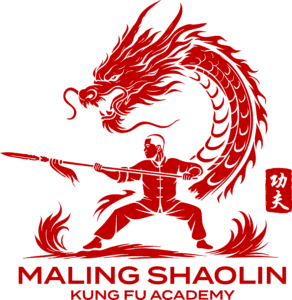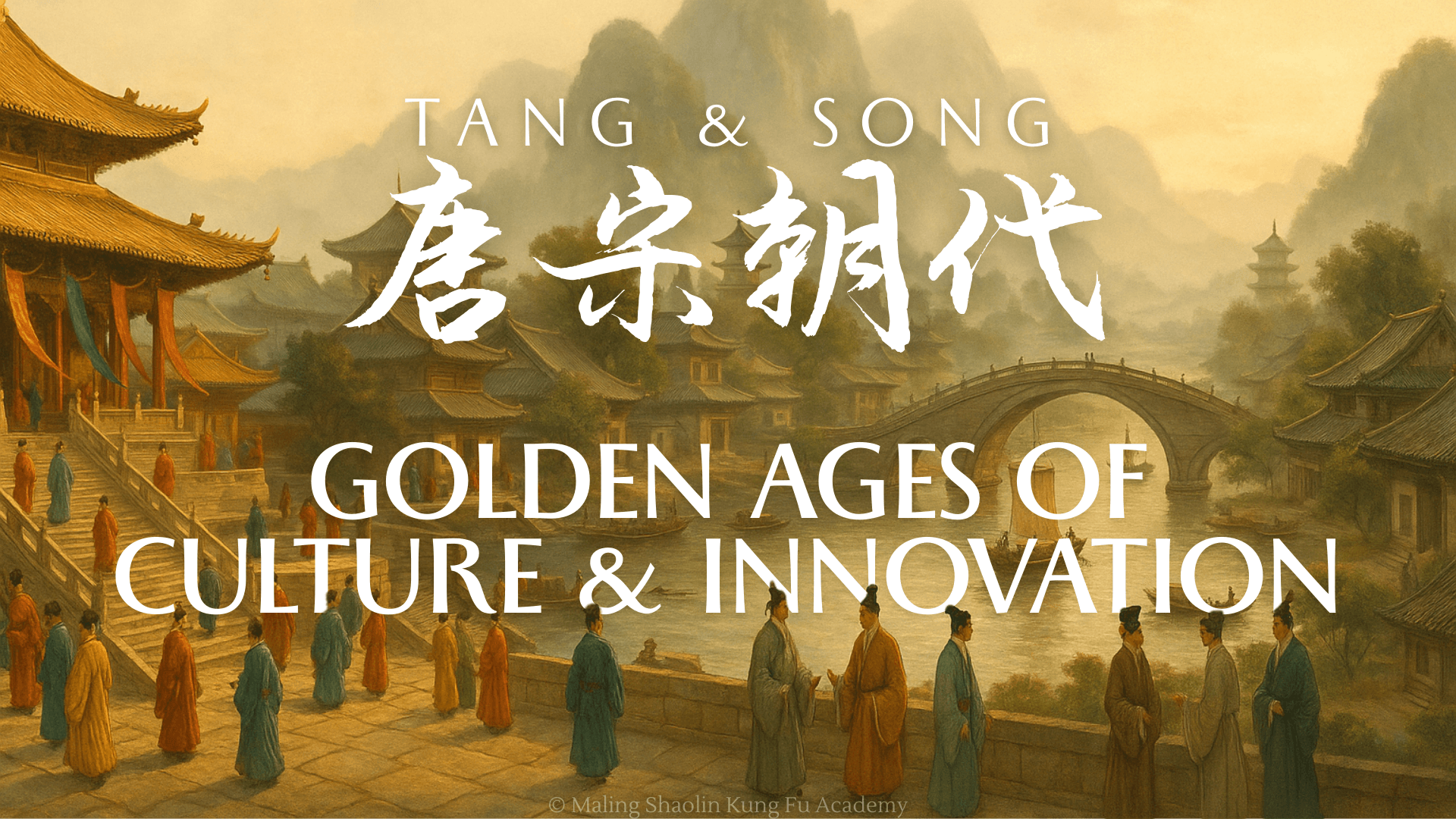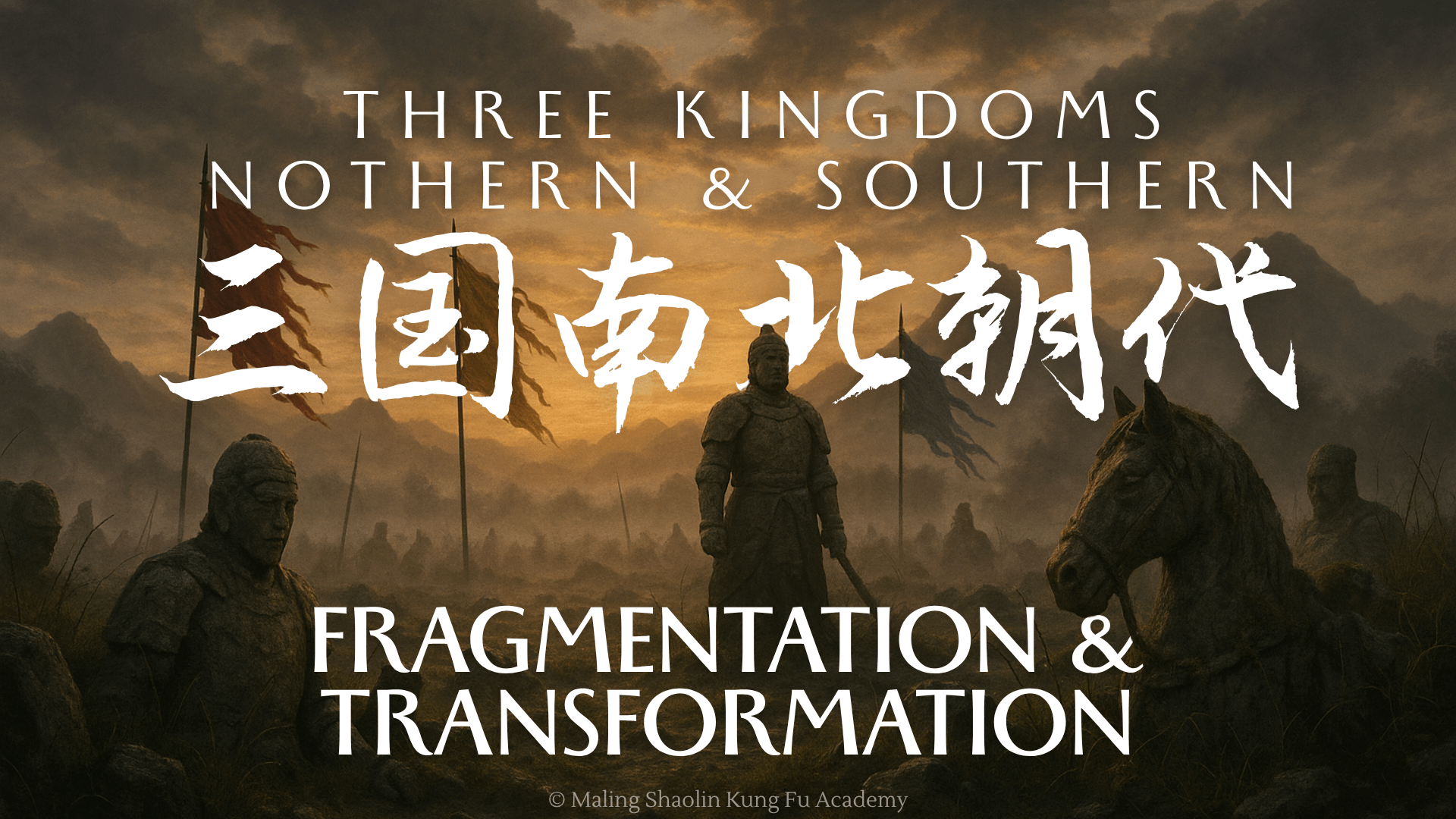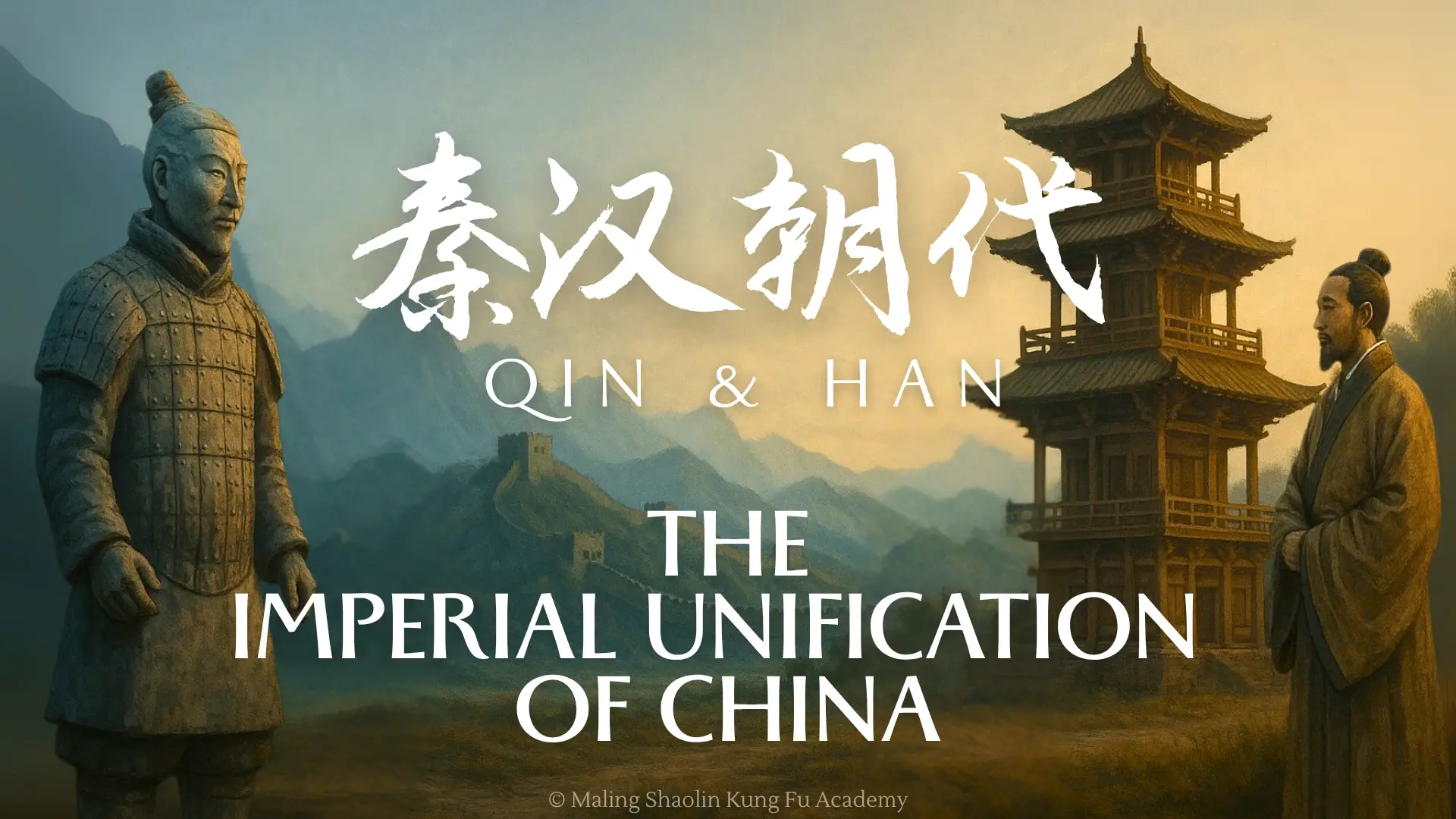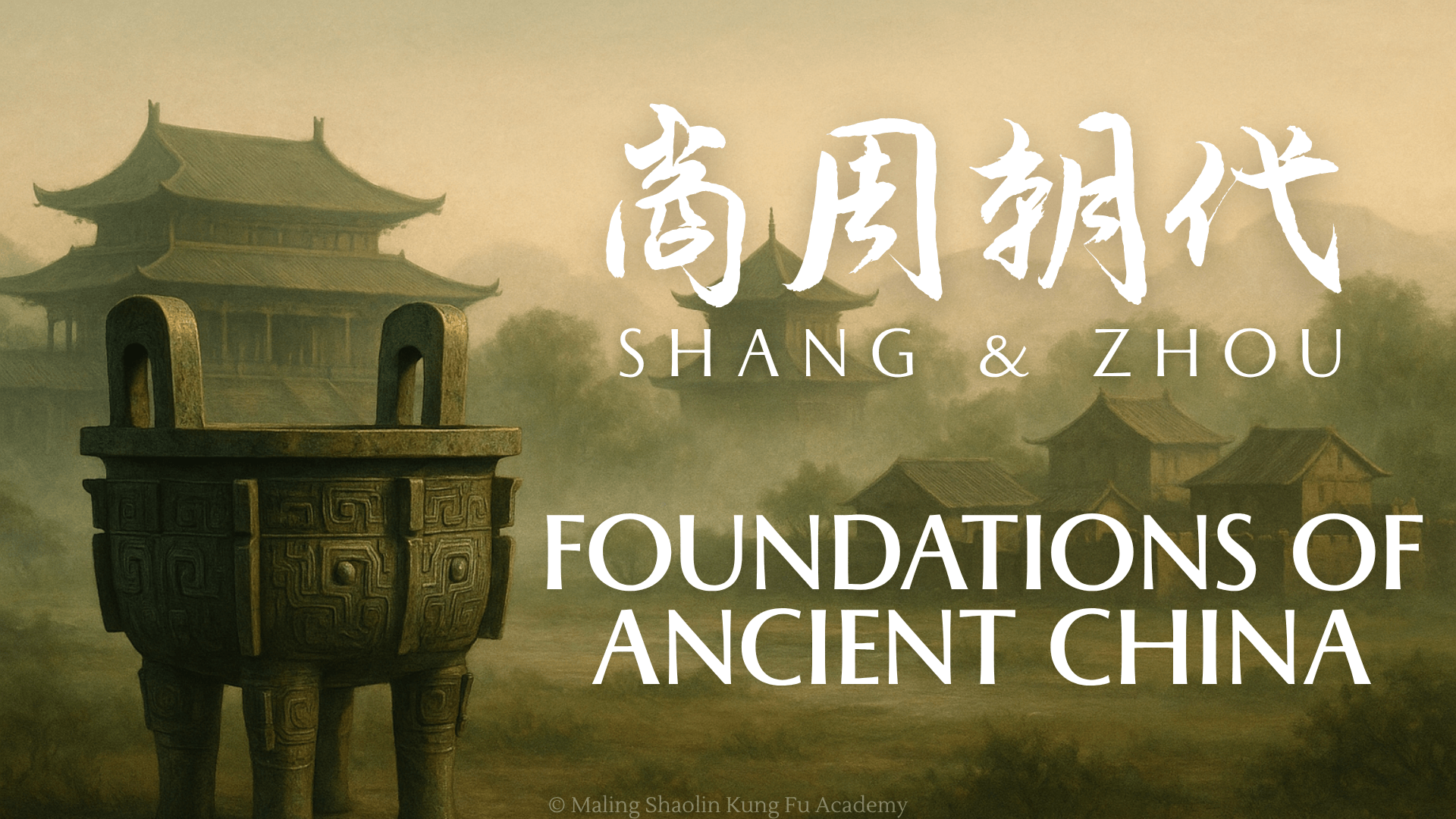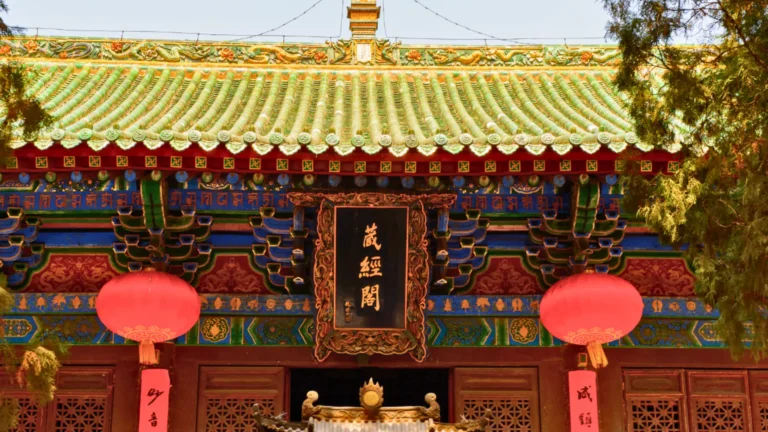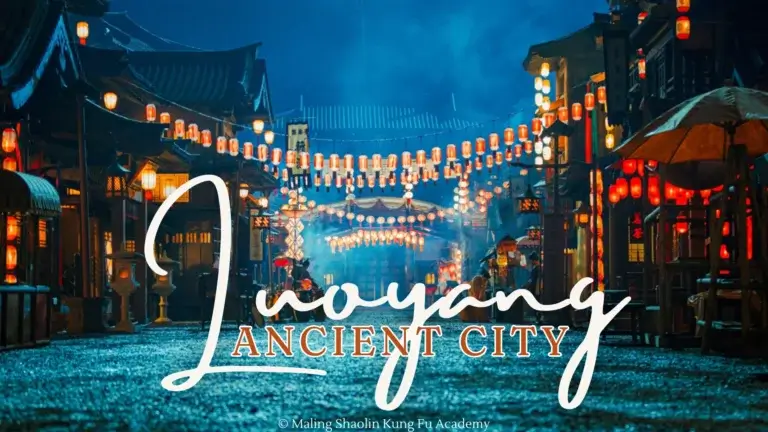Conquest and Resurgence (Yuan and Ming)

As the dazzling achievements of the Song Dynasty continued in the south, China faced waves of conquest and upheaval from the north. The fall of the Southern Song to the Mongols ushered in the Yuan Dynasty, marking the first time all of China was ruled by a foreign power. Yet even under foreign rule, Chinese traditions endured and adapted, and new cultural exchanges flourished. Eventually, the native Ming Dynasty rose in defiance, restoring Han Chinese leadership and launching an era of revival. This next chapter traces the dramatic rise of the Mongol empire, the multicultural crossroads of Yuan China, and the proud resurgence of Chinese arts, governance, and maritime exploration during the Ming.
The Yuan Dynasty (Yuáncháo 元朝, 1271–1368 CE)
In the 13th century, the unthinkable happened: all of China fell under foreign rule. The Yuan Dynasty was established by the Mongols, a people who stormed out of the steppe under Genghis Khan and built the largest contiguous land empire in history. Kublai Khan, Genghis’s grandson, conquered the Southern Song by 1279 and declared the Yuan Dynasty in 1271 (even before final victory, to give his regime a Chinese dynastic aura). The Yuan dynasty is notable as a period of unprecedented East-West contact, cultural diversity, and an unusual social order in China with Mongols at the top. It was also relatively short-lived, collapsing in less than a century after Kublai’s death. Yet, it played a key role in shaping the trajectory of Chinese civilization and the world beyond.

Under Kublai Khan (r. 1260–1294), the Mongols completed their transition from nomadic conquerors to rulers of a settled empire. Kublai moved the capital to Dadu (present-day Beijing) and adopted many trappings of a Chinese emperor – the dynastic title Yuan, a Chinese-style court, and policies influenced by Chinese advisers. However, the Mongols maintained a social stratification that placed Mongols and their Central Asian allies above the native Chinese. In administration, they employed many foreigners (Marco Polo, the Venetian traveler, famously visited Kublai’s court and served in a minor official capacity) and often distrusted the Confucian scholar-officials. The civil service exams were suspended for decades, only late in Yuan reinstated in limited form. Mongol nobles were given fiefs, and Mongol law was applied alongside Chinese law. Despite these differences, the Mongols did rely on Chinese expertise to govern: many former Song bureaucrats and engineers were employed to help run the vast Yuan domain.
The Yuan empire was the first to unite all of China, along with Mongolia, Tibet, and Xinjiang, under a single government. It also controlled Korea and had influence stretching as far as Southeast Asia. The scale of Mongol conquests meant that for the first (and only) time, China was directly connected to much of Eurasia in a Pax Mongolica. Trade and foreign intercourse flourished as never before. The overland Silk Road trade reached its peak under Yuan: merchants (including many Muslims from Central and West Asia) enjoyed patronage and safe passage. The Mongols even hosted and protected a class of professional merchants called Ortogh. Maritime trade also expanded, with Quanzhou and other ports bustling; Chinese merchants sailed to India, Arabia, and East Africa. Foreign goods and visitors poured into China, while Chinese inventions (gunpowder, printing) and products (porcelain, tea) flowed out. It was said that in Khanbaliq (Beijing), one could find “merchants of every nation under the sun.”

Culturally, the Yuan dynasty saw a vibrant blending of traditions. The Mongols themselves were religiously tolerant – Kublai Khan, though he never converted to any, supported Buddhism (especially Tibetan Buddhism), patronized Daoist temples, and allowed Nestorian Christianity and Islam to be freely practiced. Artistic and scientific exchange was encouraged: Persian astronomers worked in the Yuan observatory, Islamic medicine was introduced, and Tibetan lamas became influential in court. One of the greatest cultural legacies of Yuan was in literature, especially drama and the novel. The Yuan period witnessed the full flowering of Chinese opera – specifically the Yuan zaju (variety plays). These were four-act musical dramas, often with lively prose and poignant lyrics, performed by traveling troupes. Playwrights like Guan Hanqing (author of the famous “Snow in Midsummer”) and Wang Shifu (“The Western Chamber”) created masterpieces that are still performed. The Yuan zaju, often socially critical or romantic, reflected the voices of those left out of power (many writers were disenfranchised scholars).
Additionally, vernacular literature took big strides. While classical poetry waned under Mongol rule, storytelling in the common tongue thrived. Many of China’s great classic novels have roots in Yuan times – storytellers compiled tales that later solidified into novels. For example, the Romance of the Three Kingdoms and Water Margin (two of the Four Great Novels) were developed from oral tales told by Yuan storytellers. By the subsequent Ming dynasty, these would be written down in full. Yuan is thus often credited with “the development of the novel as a literary form.” Even the first known plays about Shaolin monks – highlighting martial exploits – emerged in Yuan drama, revealing that by this time, the image of fighting monks was popular in entertainment.

In the realm of art, the Yuan period continued Song’s excellence in painting and calligraphy, but with a twist: many Song loyalist scholars refused to serve the Mongols and became reclusive artists, the so-called “Yi-min” (leftover subjects). They developed new expressive styles. The “Four Great Masters of Yuan” – Huang Gongwang, Wu Zhen, Ni Zan, Wang Meng – painted landscapes not for realistic representation but to convey personal emotion and mood, often as veiled protest against Mongol rule. Their works greatly influenced later Ming/Qing painting. Yuan porcelain also evolved: although blue-and-white porcelain (using cobalt blue pigment) truly blossomed in early Ming, its origins trace back to late Yuan – indeed, the famous David Vases inscribed 1351 CE are Yuan pieces that show the superb quality of cobalt-blue porcelain. These vases illustrate how Yuan’s cosmopolitan trade enriched Chinese art: the cobalt was imported from Persia, designs show Middle Eastern influence, yet the craftsmanship is Chinese – a true East-West fusion.
While the Mongols were formidable conquerors, their rule was not without troubles. They never fully assimilated, and their policies sometimes alienated the Chinese majority (e.g., ethnic hierarchy, heavy taxation, corvée labor for grand projects like Kublai’s failed invasions of Japan, which drained resources). Over time, natural disasters (famines, floods of the Yellow River), corruption, and peasant unrest mounted. Secret societies with millenarian beliefs (like the White Lotus Society, a Buddhist sect) stoked rebellions. One such uprising led by a peasant cloth merchant, Zhu Yuanzhang, overthrew the Yuan in 1368. The Mongol court fled back to the steppe, ending Yuan rule.
Despite its relatively short life, the Yuan Dynasty’s contributions were significant. It “assembled the territorial base for modern China”, as one historian put it, by bringing Tibet and other regions firmly into the Chinese realm. It facilitated the greatest pre-modern exchange between East and West – making the world more interconnected. Culturally, it fostered new forms of literature and art. And it taught subsequent Chinese regimes some lessons: the Ming that followed took care to assert Chinese values and rebuild social order, conscious of the Yuan experience. In Chinese historiography, the Yuan is sometimes portrayed ambivalently – a time of foreign domination, yes, but also one of fascinating cultural flowering and global connection.
The Ming Dynasty (Míngcháo 明朝, 1368–1644 CE)

In 1368, Zhu Yuanzhang, the leader of the Red Turban rebels (with roots in the White Lotus Society), drove out the Mongols and founded the Ming Dynasty as the Hongwu Emperor. The Ming represented a Han Chinese resurgence after a century of foreign rule. Ming China stood as one of the greatest powers of the world in its time, known for restoring native Chinese rule, reinforcing Confucian traditions, and producing exquisite cultural artifacts – from blue-and-white porcelains to monumental novels. The Ming era also saw episodes of engagement with the wider world (such as the famous treasure voyages) followed by a turn inward and an increasing rigidity in governance. Spanning nearly 277 years, the Ming dynasty’s arc was one of initial vigor, mid-period global prowess, and late decline due to internal and external pressures.
Emperor Hongwu (r. 1368–1398), the Ming founder, was born a poor peasant – a monk at one point – who rose through rebellion. Traumatized by the abuses of the late Yuan and determined to prevent a repeat, Hongwu instituted autocratic and laboriously centralized rule. He abolished the post of prime minister, making the emperor the direct head of all administrative matters. The Ming emperors ruled from the outset with a far more personal grip on power than many Song or Tang rulers had. Hongwu also implemented pro-peasant policies: he distributed land to farmers, trying to rebuild agriculture after war. He is known for the Ming Code (Da Ming Lü), a comprehensive law code that balanced strict punishments with protection for commoners’ rights, and became an enduring legal framework. Suspicious of the scholar-official class (despite relying on them), Hongwu at times purged officials violently. Nevertheless, he reestablished the Confucian examination system in 1380, embedding Neo-Confucian orthodoxy (especially Zhu Xi’s teachings) as the curriculum. This created a civil bureaucracy that, despite imperial autocracy, functioned effectively through most of Ming.
The Yongle Emperor (r. 1402–1424), Hongwu’s son (who seized the throne by force from his nephew), continued centralization and led the Ming to a peak of power. He moved the capital from Nanjing to Beijing and built the monumental Forbidden City – the palace complex that remains iconic today. Under Yongle, the Ming embarked on ambitious projects: the extension and repair of the Great Wall on a large scale to guard against northern Mongols (much of the Great Wall as seen today is from Ming engineering), and compilation of the Yongle Encyclopedia (an immense compendium of all knowledge, though it was not printed).

The Yongle Encyclopedia – A Ming Monument of Knowledge
One of the Ming Dynasty’s most astonishing intellectual achievements was the creation of the Yongle Dadian (永乐大典), or Yongle Encyclopedia — an ambitious project initiated by the Yongle Emperor in 1403.
This massive literary undertaking was designed to compile all known knowledge in China at the time: from Confucian classics and history to astronomy, medicine, arts, agriculture, religion, and even folklore. More than 2,000 scholars worked for years to hand-copy selections from over 8,000 texts, creating a work so vast it ultimately filled 22,877 scroll-style chapters compiled into 11,095 volumes, bound in nearly 40,000 manuscript rolls.
To put this in perspective:
It was the largest general encyclopedia in the world for centuries —
Not surpassed until Wikipedia overtook it in size in late 2007.
Unlike modern encyclopedias, the Yongle Dadian was never printed due to its colossal scale. Only handwritten copies existed, and unfortunately, most were lost in fires, war, and looting — including during the fall of the Ming and later during the Boxer Rebellion. Today, less than 400 volumes survive, scattered across libraries and museums around the world.
The Yongle Encyclopedia represents the Ming Dynasty’s reverence for learning, its belief in the moral value of preserving knowledge, and the strength of state-backed scholarly enterprise. It remains a symbol of China’s literary heritage and a testament to the scope of imperial ambition under the Yongle Emperor.
Most famously, Yongle sponsored Zheng He’s treasure voyages (1405–1433) – seven state-sanctioned naval expeditions led by Admiral Zheng He, a Muslim eunuch, which sailed throughout Southeast Asia, the Indian Ocean, all the way to the Swahili Coast of Africa. Zheng He’s gigantic fleets (with ships far larger than any European caravels of the time) carried silk, porcelain, and tea as gifts and brought back exotic products and ambassadors from dozens of kingdoms. These voyages projected Chinese power and prestige overseas, expanded tributary trade, and established Chinese communities or influence in ports across Asia. They are evidence that Ming China at its height was outward-looking and commanded resources unmatched globally. However, after Yongle and his immediate successors, the expeditions were discontinued – partly due to cost and a changing threat perception (the court chose to focus on Mongols at land frontiers rather than maintaining expensive oceanic adventures). China’s maritime initiative waned, which has led historians to debate whether Ming missed an opportunity for even greater global engagement. Nonetheless, trade continued vigorously: Chinese silk and porcelain (chinaware) were highly coveted in Europe, and by the 16th century, Spanish galleons carried tons of Chinese goods via Manila to the West.
Culturally, the Ming dynasty was exceptionally productive. In literature, this period saw the creation of the remaining Great Classical Novels: “Romance of the Three Kingdoms”, “Water Margin” (also known as Outlaws of the Marsh), “Journey to the West”, and in the late Ming, “Jin Ping Mei” (Golden Lotus, a realist/social novel). These works, written in vernacular Chinese and drawing on centuries of folklore and history, are towering achievements in world literature. The Ming also produced a thriving drama tradition – the Kunqu opera style emerged, refined and elegant (Tang Xianzu’s play The Peony Pavilion, 1598, is often called the Chinese Romeo and Juliet). Painting in Ming evolved from Yuan’s literati styles: early Ming masters like Shen Zhou and Wen Zhengming of the Wu school continued the scholarly landscape tradition, while later Ming saw a burst of more individualist painters (Xu Wei’s expressive ink work, Dong Qichang’s theories on Southern vs Northern school painting, etc.). Ming porcelain from Jingdezhen became globally prized; the era perfected the blue-and-white wares and developed new color glazes (e.g., the doucai, wucai polychrome styles). Fine lacquerware, jade carving, and silk tapestry (kesi) also attained high levels. Culturally, the Ming leaned towards a certain conservatism in taste – a nostalgia for earlier Song/Yuan high culture among elites – but at the same time, a vibrant urban pop culture of teahouses, novels, and performances thrived in cities like Nanjing, Suzhou, and later Beijing.
In philosophy and intellectual life, Neo-Confucianism remained orthodox but began to face challenges. Early Ming scholars largely toed Zhu Xi’s line (learning by rote the classics’ commentaries). But in the 16th century, thinkers like Wang Yangming (1472–1529) revolutionized Confucian thought by arguing that li (principle) is inherent in the mind and that one could attain sage-hood through intuitive moral action, not just book learning. Wang’s school of mind (xinxue) empowered more spontaneous, subjective approach to morality – it had a liberating influence and sparked intense debates, cultivating a more individualistic ethos among some late Ming literati. This intellectual ferment paralleled a society becoming more complex: commerce boomed (silver from Japan and the New World flooded Ming economy via trade), and a new moneyed class of merchants patronized arts and entertainment, sometimes clashing with the Confucian gentry values.
Religiously, Buddhism and Daoism continued as major faiths (with many educated Chinese practicing a syncretic mix of Confucian ethics, Buddhist meditation, and Daoist health practices). Late Ming saw a resurgence of Chan Buddhism among the literati, perhaps as a spiritual refuge from worldly chaos. The Ming emperors themselves had varied religious interests – some leaned on Daoist alchemists, others on Tibetan lamas. Notably, Roman Catholicism entered China in the late Ming via Jesuit missionaries like Matteo Ricci. Ricci arrived in 1583 and, through his mastery of Chinese language and culture, gained permission to reside in Beijing. The Jesuits, impressed by Chinese civilization, tried a top-down approach: converting officials by showing them Western science (Ricci introduced European astronomy, geography, and calendrical science to the Ming court). While the number of converts remained small, by 1600 there was a Christian presence, and an interesting exchange: Jesuits translated Euclid and Copernicus into Chinese, while also sending reports of China to Europe. The late Ming thus began tentative steps into the globalized world – though this would bear more fruit in the Qing.
Militarily, the Ming in early days were quite strong: they defeated remaining Mongol forces, secured borders, and even mounted punitive expeditions into Mongolia and Southeast Asia. A notable feat was the construction of a vast navy for Zheng He’s voyages – unparalleled until modern times. However, after mid-Ming, the dynasty faced growing threats: revived Mongols (under Altan Khan in 16th century), and a new foe – pirates (wokou) along the coast, many of whom were disaffected samurai or Chinese smugglers. The Ming government’s policy of haijin (sea bans) to control trade inadvertently encouraged smuggling and piracy. The Ming eventually lifted the ban and engaged the pirates. A legendary Ming general, Qi Jiguang, not only defeated wokou raiders in the 1550s but also authored a famous military manual which included chapters on martial arts training for soldiers. Qi Jiguang’s 1560s manual described empty-hand combat and spear techniques, referencing Shaolin staff methods and other folk styles. This is a crucial historical source for Chinese martial arts, indicating that by Ming times, codified martial techniques (including those of Shaolin monks) were incorporated into military training. Indeed, the Shaolin Temple enjoyed imperial favor in Ming: several Ming emperors admired the monks’ fighting skills. There are records of Shaolin monks helping the Ming army against Japanese pirates – wielding the famed Shaolin staff to great effect. The Shaolin monk Tienyuan was said to have led a monk militia under General Qi’s command, earning honor. The Ming gave the Shaolin Temple land and gifts in gratitude. Martial arts in general flourished during the relatively peaceable late Ming, as gentry and commoners alike took an interest – many classical martial arts styles trace their founding or first written records to the Ming era.
By the early 17th century, however, the Ming Dynasty was in crisis. Financial trouble brewed as silver imports fluctuated and tax evasion by elites increased. Court factions (eunuchs vs. scholars) paralyzed effective reform. Natural disasters (a “Little Ice Age” caused famine) and ensuing peasant uprisings (like the one led by Li Zicheng) spelled doom. At the same time, a new external threat – the Manchus (a Jurchen people from the northeast) – grew in power. In 1644, Beijing fell first to Li Zicheng’s rebels, then the Manchu army (which a Ming general invited through the Great Wall to help oust the rebels). The Manchus seized the capital and soon extinguished Ming resistance elsewhere, establishing the Qing dynasty.
The Ming Dynasty’s contributions, nonetheless, were lasting. It was the last ethnic Han dynasty, and it championed a restoration of Chinese traditions – from court rituals to examination learning – that the Qing would inherit and continue. It fostered tremendous cultural output and economic growth (some historians even dub Ming China around 1600 as having nascent capitalism in its vibrant market towns). Ming China’s porcelains and silk became early staples of global trade – the name “china” for porcelain is no coincidence. The image of China in European minds during the Enlightenment was largely based on reports from late Ming (via Jesuits). Domestically, Ming saw the rise of a prototypical consumer society among urban dwellers, with popular novels and plays indicating a more literate populace. Its failures – rigidity, naval withdrawal, inability to stem corruption – provide cautionary lessons in Chinese historiography. But overall, the Ming is often remembered with patriotism: a native golden age of strength and high culture before foreign Manchu conquest.
The Fall of the Ming – Legend of the Last Stand
As Ming authority crumbled in 1644, loyalists made desperate stands. One famous tale of martial valor is the Battle of the Great Wall passes. General Wu Sangui, guarding Shanhai Pass, faced rebels on one side and Manchus on the other. He chose to side with the Manchus, opening the gates that let Qing troops in. Some Ming loyalists fled south, establishing the short-lived Southern Ming regimes. In martial lore, this turbulent time gave rise to legends like the “Burning of Shaolin Temple”: folklore claims the Qing regime (concerned about Shaolin-trained loyalists) destroyed the temple, and a few surviving monks fled to spread Shaolin kung fu (giving birth to styles like Wing Chun). While historical accuracy is dubious – records suggest the Shaolin Temple was razed earlier by Ming rebels (1641) and rebuilt later – the story became a staple in kung fu novels and films. It symbolizes the end of Ming and the persistence of its martial spirit even after dynasty’s fall, as refugee warriors supposedly kept resistance alive through secret societies and martial arts. Indeed, many anti-Qing resistance groups in the 17th–18th centuries (Triads, Heaven and Earth Society) wrapped themselves in the narrative of “avenging the Ming” – showing how a dynasty’s legacy can inspire popular movements long after its demise.
